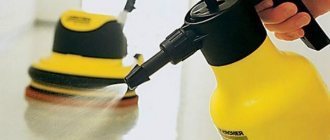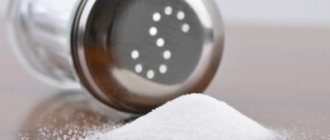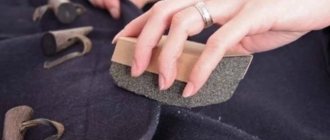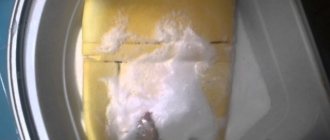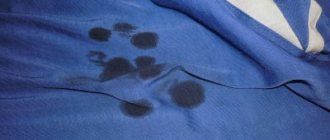The marble kitchen counter of your dreams is finally installed. But wait, how do you clean marble? Keeping marble countertops and tiles clean is actually easier than you think, but as with any surface, you need to know what you're dealing with.
Marble is a delicate, porous material, which means it is sensitive to acids. And even a seemingly harmless drop of lemon juice can make its surface dull, corroding the upper part of the layer. Therefore, marble cannot be cleaned with any household cleaner.
Cleaning marble is a task that requires special products and a very specific process to protect it and get the best results. This guide will cover everything you need to know about cleaning and maintaining marble tiles or surfaces, including what products you can and cannot use.
General recommendations and tips for cleaning marble
One of the reasons marble is popular is that it is very easy to keep clean. Of course, to do this, you'll need to avoid acidic cleaners. There are special formulations for marble, but even they may not contain the safest ingredients. Get in the habit of reading labels for neutral, non-abrasive products that can help clean this material.
For regular cleaning, you can use a mild mixture of soap and water. Simply apply the soap mixture to the surface and then, using a soft cloth, gently wipe the area to completely remove any soap residue. Next, use a circular polishing motion to dry the marble with a soft towel to add extra shine to the surface. As you can see, cleaning marble is a relatively simple process, and if you do it regularly, it won't be labor intensive. Get into the habit of cleaning up spills immediately, keeping the surface clean.
Each has a separate “room”: an unusual bunk bed for boys
How to style medium-length hair without looking boring: a selection of ideas
Vasilisa Volodina named dates of birth that threaten excess weight in 2022
How to clean a marble floor
The principle is simple; cleaning marble consists of two stages:
- cleaning;
- marble protection.
Before washing, you need to dry clean the stone and remove dirt, dust and other small solid contaminants from the surface using a coarse brush. Next, the floor must be treated with a special protective composition for daily use (for example, LEM-3 cleaner).
To remove strong and stubborn stains, it is important to use concentrated, safe cleaning solutions (Ultra Stripper). After wet cleaning, the stone must be completely dry naturally, and after that you can begin to apply a protective coating to the surface.
There are three methods that help keep your flooring looking great for a long time:
- Application of wax. It helps create a protective film on the surface of the marble that lasts for a long time, protecting it. The wax-coated stone shines and retains its original appearance for a long time.
- Since this is a porous material, it absorbs various compounds well, so it is best to impregnate the surface with special dirt-repellent agents . They prevent various contaminants from penetrating deep into the structure of the stone, creating a special protective film, making it easier to clean. Such impregnations additionally tint the stone; after their application, it looks wet and shiny.
- The third method is mixed, it includes a combination of impregnation and wax . The owner does not need to apply the compositions one by one; ready-made products are available for sale. Idea HP has proven itself best.
In stores you can also find combined detergents that are suitable for daily use. They contain synthetic and natural wax, as well as safe cleaning ingredients.
Most owners of marble floors prefer to apply polish to the surface after washing. Such compounds have a special anti-slip effect.
Mold
Biological stains such as mold and mildew can be removed from your marble surfaces using a combination of home remedies: hydrogen peroxide, water and dishwashing liquid. Use a spray bottle to apply the solution and then scrub the area until the stain disappears. Always wipe the area with water to remove any residue.
In the rain or on a sunny day: trendy everyday spring looks for all occasions
I washed myself with perfume, sacrificing lunch: the unknown life of the artist Mikhail Vrubel
Polina Dibrova honestly answered the question of whether she would fall in love with a simple security guard
Daily care
Marble items are very easy to care for. A piece of soft cloth and suede, as well as water, is what you will need to clean the product from minor dirt. Suede is needed to polish the surface.
It happens that something spills or falls on the marble. There's no need to panic. He can withstand a lot. But it's better to act quickly. After all, if the stain remains on the marble for a long time, it will be very difficult to remove. It is necessary to treat the contaminated area with a damp sponge as quickly as possible.
Dye
If you can do it carefully, the best way to remove the paint is to scrape it off with a razor blade. Large stains or streaks can be removed with solvent or paint remover, although this may damage the top of the surface and require sanding after removing the stain. Make sure you follow the directions on the cleaner or solvent and take proper safety precautions when doing so.
Safe stain removers
Marble cleaning is carried out only with specialized preparations that are gentle on natural stone and cannot damage its surface. Bellinzoni brand products are rightfully considered leaders in this niche.
The following products have proven themselves to be the best:
- Stone Care Kit. This is a whole care kit not only for floors, but also for all marble products. It includes a cleaning agent, a protective coating, and a polish.
- Spray RR/1. As the name suggests, this is a foamy spray cleaner that, thanks to its texture, penetrates deeply into the thickness of the stone and effectively pushes contaminants out. The product is safe for stone, easy to use and can be used for daily care of marble floors.
- Mangia Macchia paste copes well with organic dirt, grease stains and coloring liquids. The composition does not contain coarse abrasive particles, it is not capable of disturbing the integrity of the stone polishing, and no streaks appear on the surface. Can be used for both light stains and deep cleaning.
- Detergent LEM-3. A deep cleaning product that helps remove old and severe dirt from the surface. It comes in the form of a concentrate, so it must be diluted with plenty of water. But if the dirt is very ingrained, then the marble cleaner can be applied in its pure form.
- Rusteater. The simplest concentrated product, which comes in gel form. Suitable for removing rust from the surface of natural stone. You can fully care for marble with its help only in the case of countertops in the bathroom or kitchen.
Glass
- Apply a little baking soda to a green Scotch-Brite abrasive. Instead of Scotch Brite, you can use sandpaper. For significant scratches, P120 grit is used. For minor damage, you can purchase paper with grain P180, P220 or P320. It all depends on the depth of the scratch. You need to complete the leveling by sanding with fine grain P400 or P600.
- Use sandpaper to rub the damaged area on the artificial stone product in a circular motion. During the grouting process, it is necessary to monitor the condition of the scratch. For numerous scratches, use a grinding machine.
- When the damage is leveled with the general surface, the area is washed off with water.
- The treated area is covered with a detergent containing ammonia. If it is not available, you can use any household chemicals without abrasive particles. The product is left for 5-10 minutes.
- Use the soft side of the sponge to wipe the treatment area and rinse with water.
- The entire sink is wiped dry with a soft cloth or rag.
Let's take a closer look at what products for getting rid of contaminants are included in this group:
Removing tea, coffee and tobacco stains
Such stains leave pinkish marks on the marble. If the marble product is located on the street, then they can pass on their own, becoming lighter due to the sun's rays and being washed out by rain. But indoors, it is better to remove this type of pollution using special cleaning products. For this, a mixture prepared from a few drops of ammonia and a 20% solution of hydrogen peroxide is suitable. Soak a napkin in stain remover and leave it for a day. After this, rinse the marble with warm water, then wipe with impregnation and polish until shiny.
Removing grease stains from marble
Oily and greasy stains are the most unpleasant type of dirt. They appear from cosmetics, creams, oils, food and other things. They leave a dark mark on the surface. They require a quick response, since once the stain is absorbed, it will be almost impossible to remove.
Starch, chalk chips or any other absorbent powder will help combat such contaminants. You need to apply it to the stain. Then you need to wait until it is completely absorbed, remove it and apply a new layer. The second layer should remain on the contaminated area for 24 hours. It can be removed using a stiff brush and detergent. Household chemicals can be replaced with ammonia.
After the procedure, you need to wash the surface with water, dry and polish.
If the stain does not disappear, you need to remove it with a solvent. Again, the white substance is taken from the napkins and soaked in acetone. Then this mass wipes away the dirt.
Enameled sanitary surfaces
To avoid damaging the enamel, do not use metal brushes for cleaning. The best option would be a soft foam sponge or cloth.
Of course, the surest way is not to run and regularly clean the enamel bathtub and other enamel-coated plumbing fixtures. But over time, even with regular care, rust stains, waterstone deposits and other unpleasant consequences of long-term use may appear, spoiling the appearance. How to completely clean enameled plumbing fixtures and return them to their original appearance?
Acid method
Lime deposits are easily dissolved by acids. The most popular household acids are acetic and citric. We will use them.
- Lemon acid. Take at the rate of 50 g per 2 glasses of warm water. Dissolve so that no grains remain. Dampen a soft sponge in the resulting solution and wipe it over the entire surface to be cleaned. Without rinsing, repeat the procedure after 15 minutes, carefully walking through the contaminated areas. Dense lime deposits can be removed by placing a cloth or napkins soaked in the same acidic solution on top of them and leaving for 20–30 minutes. Then rinse with water. If the deposits have not completely disappeared, the procedure can be carried out again.
- Vinegar. Instead of citric acid solution, you can use 9% vinegar (not essence!). The algorithm of actions is the same as in the previous case, just be careful - do not inhale the caustic fumes. After vinegar treatment, the room should be ventilated.
Alkaline method
- Mix baking soda and soda ash in equal proportions, add a little water to form a paste. Rinse the item to be cleaned with water to keep it damp. Apply the resulting slurry, rubbing it evenly over the entire surface using a soft sponge. Leave for 20 minutes, then wipe with a sponge soaked in clean water. Rinse off.
Combined method
To achieve maximum cleansing effect, you can combine both methods. So, almost any limescale deposits, rust streaks and other contaminants from an enamel bathtub, sink and other enamel-coated products can be removed as follows:
- First we proceed as in the alkaline method. Mix baking soda and soda ash in equal proportions, add water until a thick mushy mass is formed, which is then evenly spread over the enamel surface of the product. Leave for 20 minutes.
- Without removing the slurry that was applied a step earlier, lightly rub everything with a soft sponge or rag soaked in 9% vinegar. Leave for 20 minutes.
- We wet the sponge in clean water, wipe everything with it again, rinse thoroughly and enjoy the cleanliness.
Don’t forget to work only with gloves, otherwise you can remove the skin from your hands along with the dirt.
Types of natural stone countertops
Various breeds are used to make them. Most often, countertops are made of sandstone, granite, onyx and marble:
There is a wide variety of advice on how to wash a stone countertop. In any case, preference should be given to products designed for a specific type of material. If they are not there, you can turn to proven folk methods.
Cleaning a natural stone countertop
Special products: ordinary cleaners that are used for washing bathrooms or dishes will not work here. Natural materials require specialized means to prevent the formation of damage on the surface.
Available means: the simplest thing is a soap solution. It helps to clean natural stone without harm. When caring for its surface, use thick wool or a soft kitchen towel.
Composite table top
Determining how to clean an artificial stone sink is not difficult. You can turn to specialized means or use traditional methods.
Special products: when choosing professional products, it is necessary to take into account the type of coating, as well as the color of the surface. For light colors, detergents with 5% chlorine are suitable, which disinfects and bleaches.
- to remove coffee and tea stains - lemon juice;
- to remove greasy stains - mustard powder;
- for whitening and gentle cleansing of yellowness - gel toothpaste;
- aqueous solution of vinegar;
- soda;
- carbonated drinks that contain phosphoric acid.
Cleaning marble: how and what to wash marble at home
It is necessary to thoroughly clean the sink monthly using dishwasher tablets. The tablet must be dissolved in water and the paste applied to the entire surface for 30 minutes. Then you should rinse and dry the sink.
Expert opinion
Ekaterina Korneva, expert in the field of care, cleanliness and beauty
I will help you understand all the intricacies.
The question arises of how to remove limescale from a black stone sink if acid cannot be used. To do this, wipe the sink dry after washing dishes, do not leave wet rags, sponges, or brushes on it. How to clean a marble monument and restore beauty. If you have any questions, please contact me, I will be happy to answer!
